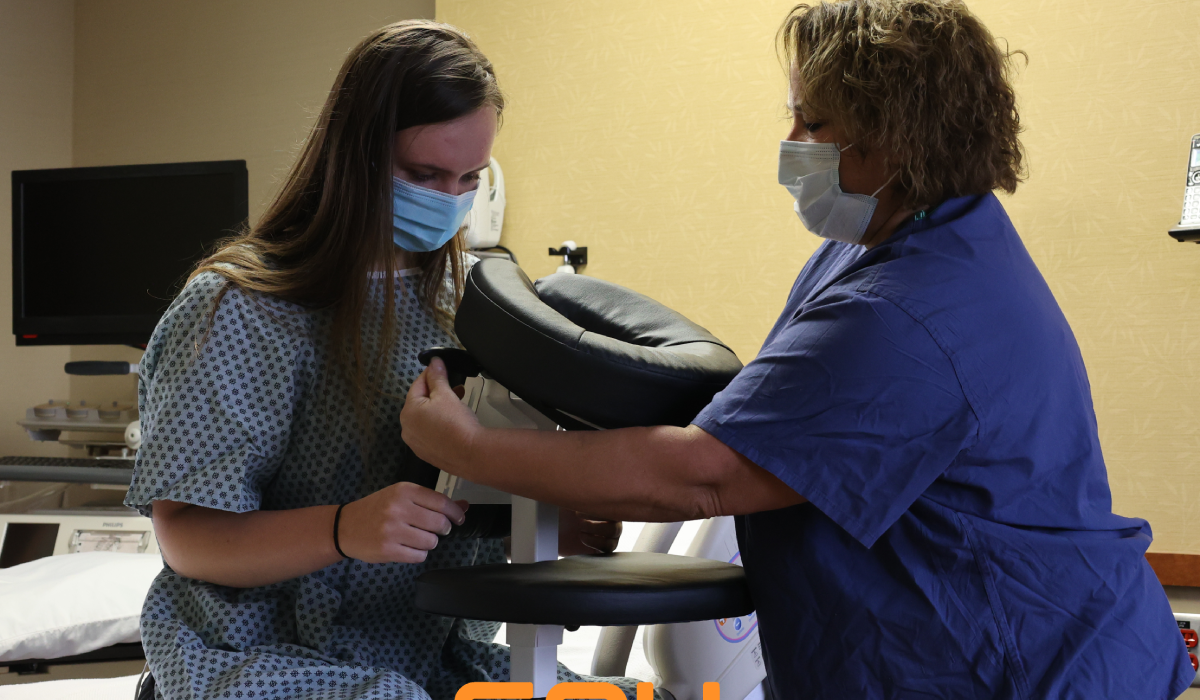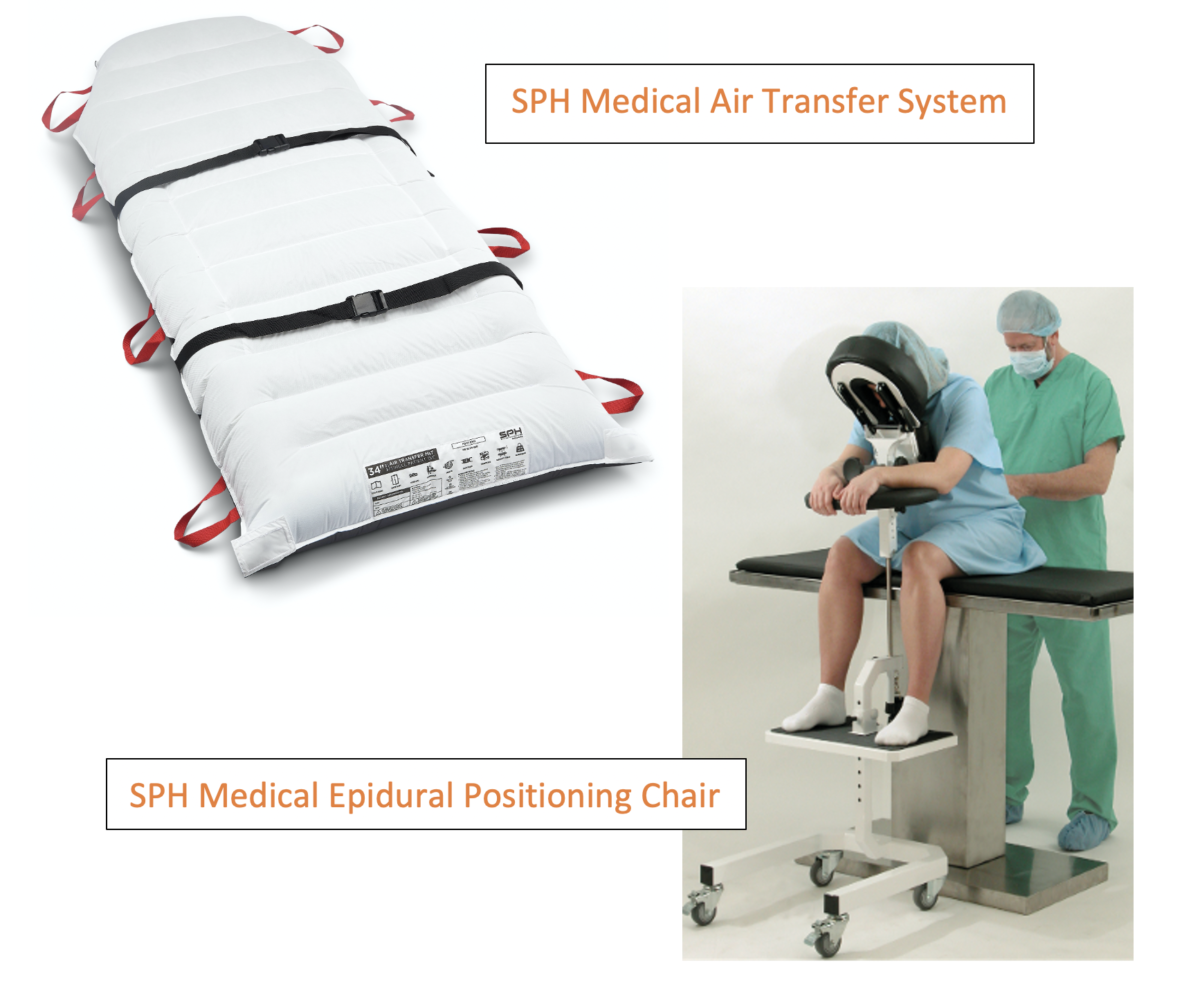What is an EPD and How Does it Help with Safe Patient Handling?
EPD stands for epidural positioning device. This is an epidural chair that helps to safely position and support a patient while getting an epidural or spinal block. This portable device allows for optimal safe patient handling without the physical need of staff members to hold patients for an extended period of time.
Why is an EPD Useful for a Thoracentesis?
When a thoracentesis is performed, the patient must be placed in a similar position as an epidural to allow the needle to successfully penetrate into the pleural space. Expert patient positioning is a must to ensure that this procedure is done safely and correctly every single time.
Unfortunately, using stacked pillows and relying on the physical exertion of staff members to hold a patient in place during this painful procedure isn’t always the best option for your facility. Rather an epidural positioner can be a great addition to any hospital looking to reduce nursing injury statistics and optimize patient care.
Where is Thoracentesis performed?
Thoracentesis is often performed in a hospital setting where a pulmonologist will drain the fluid in the pleural cavity. This can be an inpatient procedure or an outpatient procedure. One hospital that uses the EPD for thora’s, City of Hope in Los Angeles, California has their patients visit the ultrasound department where the ultrasound tech is responsible for preparing the patient. Ultrasound guidance is used to locate the needle insertion point and is considered to improve patient safety.
The Various Safe Patient Handling Benefits of EPDs
When it comes to safe patient handling, EPDs are a great way to help enhance your staff’s ability to keep patients safe and comfortable during a thoracentesis procedure. In fact, these devices provide many great benefits for patients and staff members alike.
Increase Safe Patient Handling with the EPD
The epidural positioner will provide each patient with layers of support that will keep them safe throughout the procedure. While staff members are capable of holding patients in position, these types of static holds put hospital workers at risk and there’s always the possibility the patient or the staff member moving. For example, a staff member may experience a cramp or some other condition that compromises their ability to continue to hold the patient safely in position. With an epidural positioner, you can eliminate the risk of manual patient handling and ensure patient safety 100% of the time.
Less Risk to Staff Members
Nurses and ultrasound techs won’t have to hold the patient into position or continue to support them throughout the procedure. Additionally, there’s no possibility of the patient falling and staff members having to quickly catch a falling patient or support the full weight of the patient. Any equipment that helps to reduce long periods of static holding or over exertion by your staff members can greatly contribute to healthier staff members, improved job satisfaction, and will reduce the risk of musculoskeletal injuries.
Requires Fewer Staff Members
Another great benefit of epidural positioning devices is that they provide so much support for the patient that you won’t need to have multiple staff members manually positioning the patient. Rather, you can have one staff member oversee the patient and the ultrasound technician. This helps to reduce labor requirements and allows your staff members to more efficiently handle patient flow throughout the day.
Epidural positioning devices can be a great addition to your medical facility. They can work to enhance patient safety, speed up procedures like Thoras, and reduce the wear and tear on your staff members. Any good medical facility knows that investing in devices that offer safe patient handling and less physical exertion from their staff members is a must. If you don’t currently have any EPDs, it’s high time to consider investing in them.


